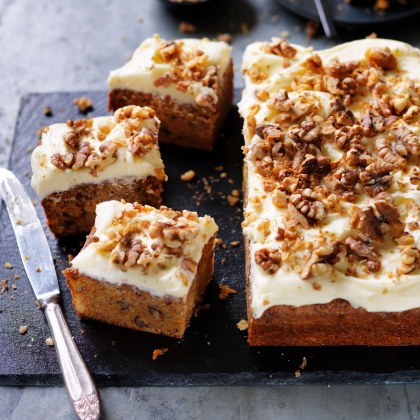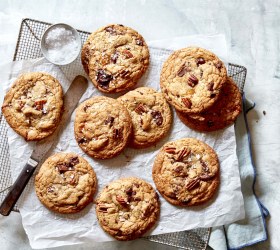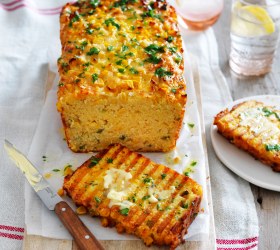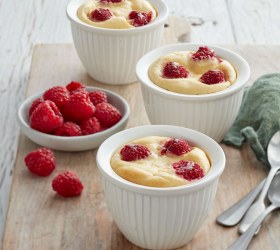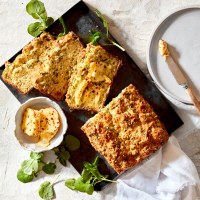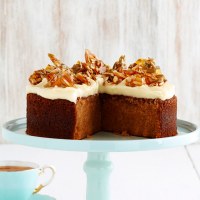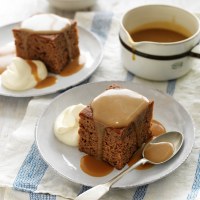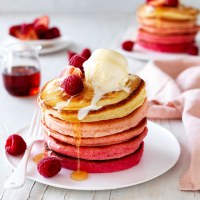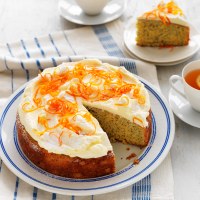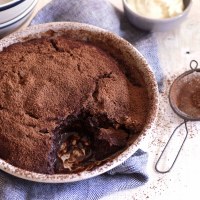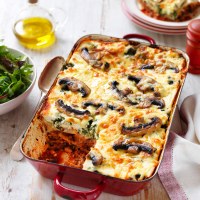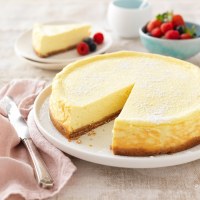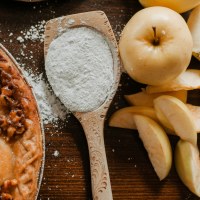The difference between baking powder and baking soda
Baking powder and baking soda sound similar, but they’re not the same! If you swap them out for one another, you can end up with some funky tasting results or some pretty flat and sad baked goods. Learn more about them and how to use them in the kitchen!
What is baking soda?
Baking soda has only one ingredient: sodium bicarbonate. It’s also called bi-carb soda, bicarbonate of soda or just bi-carb. It comes in a fine powder form. Baking soda is used for leavening baked goods. In other words, it makes baked goods rise and become light and airy.
How does baking soda work?
Baking soda is alkaline, and when it’s mixed with an acid (such as vinegar, lemon juice, yoghurt or cream of tartar) and moisture, it produces carbon dioxide. These bubbles of carbon dioxide become trapped in the mixture, and puff up as they’re heated. This makes the mixture rise, and gives cakes, cookies and other baked goods their light and fluffy texture.
Since baking soda needs acid to work, there must be something acidic in the mixture for it to rise. Also, you can’t simply add more baking soda and end up with a fluffier end result. If you add too much, your baked goods will have a metallic, soapy taste from leftover bi-carb in the mixture.
What is baking powder?
Baking powder is a mixture of bi-carb soda, cream of tartar (a dry acid), and a filler such as rice flour or cornflour. Baking powder is also used as a leavening agent in baked goods.
How does baking powder work?
Baking powder already contains both alkaline bi-carb soda and acidic cream of tartar together in the correct proportions. It reacts with itself when moisture is added, and continues to react when heated. Baking powder is most often used when a recipe does not call for an acidic ingredient to be added to the mixture, as it can create the leavening effect by itself.
Can I use baking powder instead of bicarbonate of soda?
Since bi-carb soda needs an acid to create gas and baking powder doesn’t, they’re not interchangeable in recipes. It’s best to follow your given recipe for the best result.
Make sure they’re still good
Unlike salt or sugar, baking soda and powder won’t stay good forever. They won’t make you sick, but they won’t give your baked goods the same rise if they’ve been in the pantry longer than their best before date. You can check if they’re still fresh with the following tests.
How to tell if baking powder is fresh
Mix a teaspoon of the baking powder a quarter cup of hot water. If it bubbles and reacts vigorously then the baking powder is still good and ready to use. If it doesn’t, throw it out.
How to tell if bi-carb soda is fresh
To test that your baking soda is still active, add a pinch of bi-carb soda to a small amount of vinegar or lemon juice in a bowl. If it foams up, the baking soda is still active.
Baking recipes
Now you know the difference between them, it's time to get baking! Baking powder or bi-carb soda are so important in lots of cakes, cookies, pancakes and other recipes. Below are some popular recipes that you can save to your free myfoodbook cookbooks. Don't have an account yet? Sign up to myfoodbook to start making your own free personalised cookbooks.
GET THE RECIPE: Buttermilk and Vanilla Bean Scones by Western Star
These light and fluffy scones are ready to be dolloped with lots cream and jam for your afternoon tea. The only question is, cream or jam first?
GET THE RECIPE: Banana Bread with Caramelised Bananas by Australian Eggs
Turn classic banana bread into a drool-worthy dessert with the addition of beautifully caramelised bananas on top.
GET THE RECIPE: The Best Pancakes by Australian Eggs
Make any morning special with a stack of plush pancakes drizzled with syrup.

